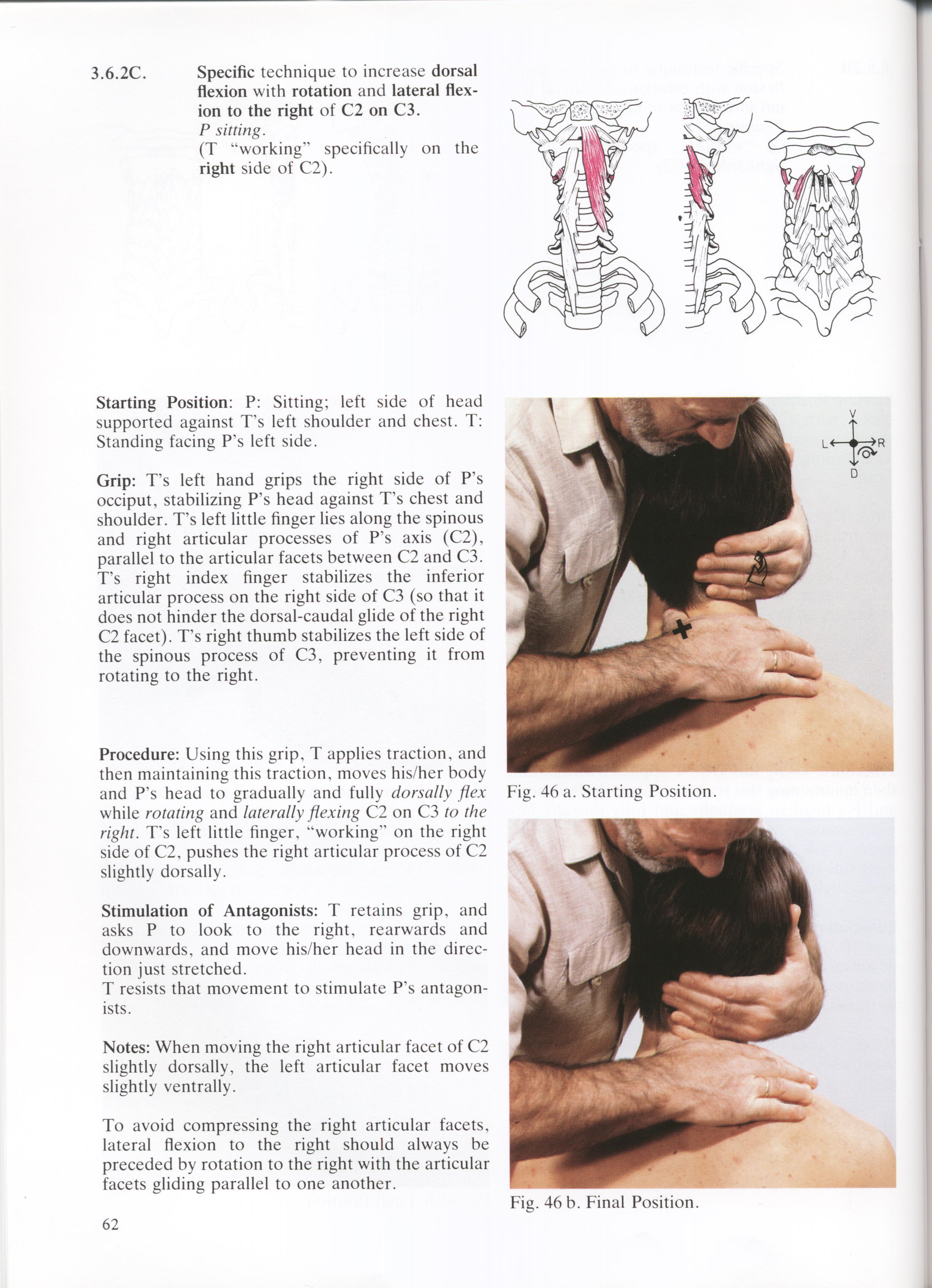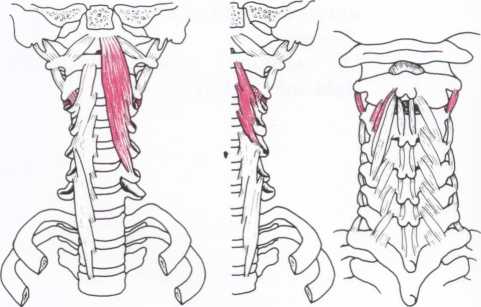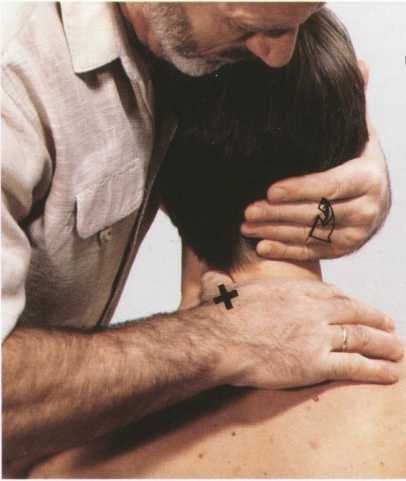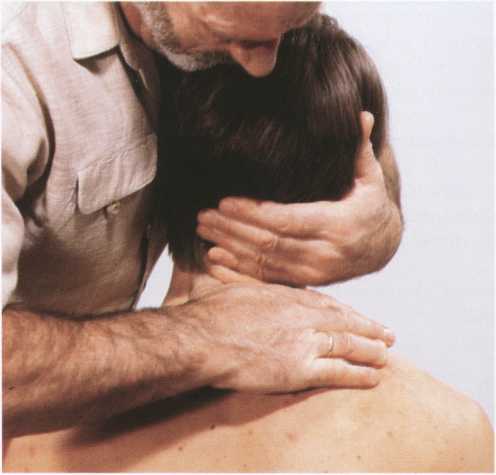62 (263)

3.6.2C. Specific techniąue to increase dorsal flexion with rotation and lateral flex-ion to the right of C2 on C3.
P sitting.
(T “working” specifically on the right side of C2).
Starting Position: P: Sitting; left side of head supported against Ts left shoulder and chest. T: Standing facing P’s left side.
Grip: Ts left hand grips the right side of P’s occiput, stabili/ing P’s head against Ts chest and shoulder. Ts left little finger lies along the spinous and right articular processes of P’s axis (C2), parallel to the articular facets between C2 and C3. Ts right index finger stabilizes the inferior articular process on the right side of C3 (so that it does not hinder the dorsal-caudal glide of the right C2 facet). Ts right thumb stabilizes the left side of the spinous process of C3, preventing it from rotating to the right.
Procedurę: Using this grip, T applies traction, and then maintaining this traction, moves his/her body and P’s head to gradually and fully dorsally flex while rotating and laterally flexing C2 on C3 to the right. Ts left little finger, “working” on the right side of C2, pushes the right articular process of C2 slightly dorsally.
Stimulation of Antagonists: T retains grip, and asks P to look to the right, rearwards and downwards, and move his/her head in the direc-tion just stretched.
T resists that movement to stimulate P’s antagonists.
Notes: When moving the right articular facet of C2 slightly dorsally, the left articular facet moves slightly ventrally.
To avoid compressing the right articular facets, lateral flexion to the right should always be preceded by rotation to the right with the articular facets gliding parallel to one another.
T


Fig. 46 a. Starting Position.

Fig. 46 b. Finał Position.
62
Wyszukiwarka
Podobne podstrony:
60 (278) 3.6.2A. Specific technique to increase dorsal flexion with rotation and lateral flex-ion to
61 (265) 3.6.2B. Specific techniąue to increase dorsal flexion with rotation and lateral flex-ion to
63 (253) 3.6.2D. Specific technique to increase dorsal flexion with rotation and lateral flex-ion to
58 (289) 3.6.1A. Non-specific techniąue to increase dorsal flexion with rotation and later-al flexio
38 (492) 3.3.1A. Non-specific technique to increase ventral flexion with rotation and lateral f
39 (484) Non-specific technique to increase ventral flexion with rotation and lateral flexion t
40 (459) 3.3.1C. Non-specific techniąue to increase ventral flexion with rotation and lateral f
64 (250) 3.7.1A. Non-specific technique to increase dorsal flexion with rotation to the right a
65 (245) 3.7.IB. Non-specific techniąue to increase dorsal flexion with rotation to the right a
66 (237) 3.7.1C. Non-specific techniąue to increase dorsal flexion with rotation to the right a
67 (234) 3.7.2A1. Specific technique to increase dorsal flexion with rotation to the right and
68 (230) 3.7.2A2. Specific techniąue to increase dorsal flexion with rotation to the right and
69 (224) 3.7.2B. Specific techniąue to increase dorsal flexion with rotation to the right and l
71 (223) 3.7.2D. Specific techniąue to increase dorsal flexion with rotation to the right and l
43 (434) 3.3.2C. Specific technique to increase ven-tral flexion with rotation and Iateral flexion t
42 (439) 3.3.2B. Specific technique to increase ven-tral flexion with rotation and lateral flexion t
41 (472) 3.3.2A. Specific techniąue to increase ven-tral flexion with rotation and lateral flexion t
48 (390) 3.5.2C. Specific technique to increase dorsal flexion of the occiput on the atlas. P supine
70 (226) 3.7.2C. Specific techniąue to łncrease dorsal flexion with rotation to the right and l
więcej podobnych podstron